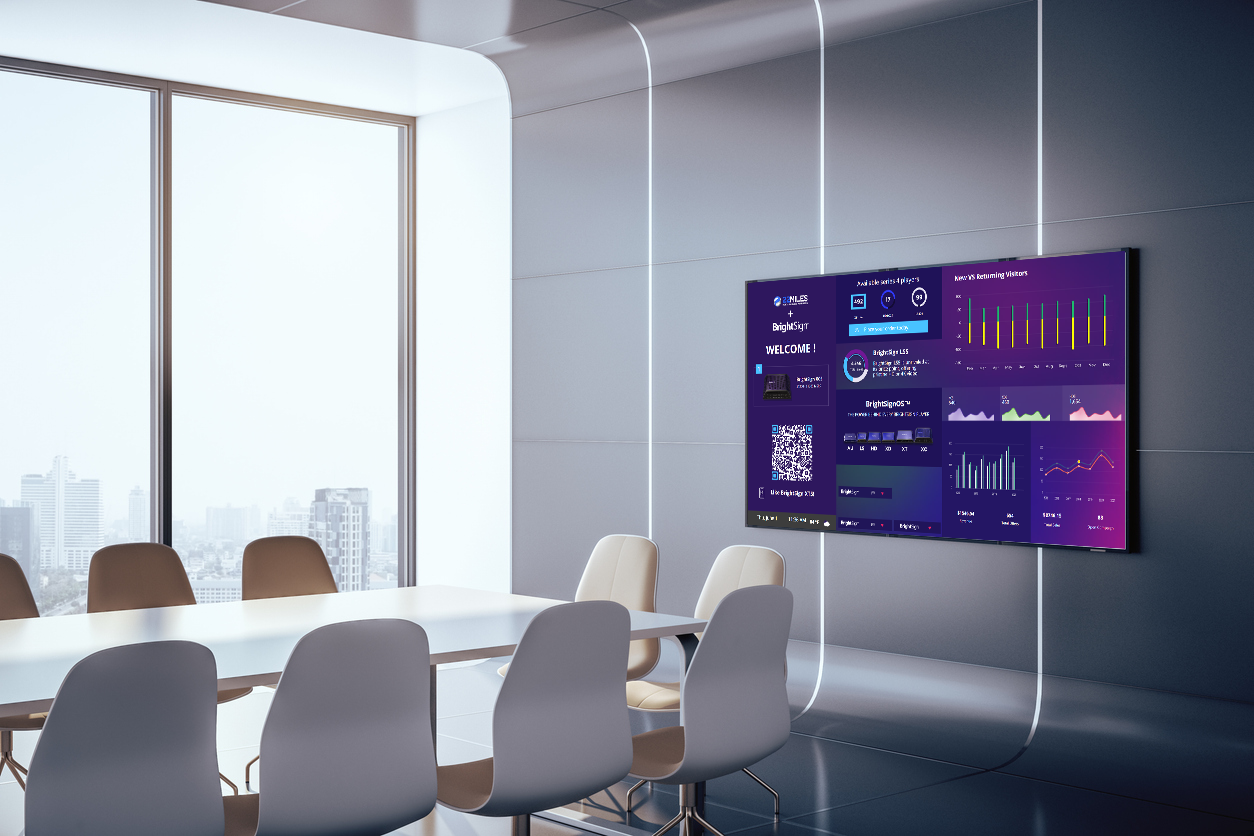November 7, 2025

When Virginia Tech expanded into the Washington, D.C. area with its new Academic Building One, the goal wasn’t just to open another facility; it was to create a smart, connected environment that could unify the university’s growing presence across Northern Virginia.
Leading that effort was Dave Wilder, Senior Building Director for DC Building Operations, who became the driving force behind the project’s digital experience. Working closely with the 22Miles team, he navigated layers of university protocols and technical hurdles to deliver a seamless, scalable system that connects people to spaces through interactive kiosks, directories, and real-time campus information.
We sat down with Dave to talk about how he brought 22Miles technology to Virginia Tech, the collaboration it took to move the project forward, and what’s next as the team continues rolling out mobile accessibility and new features. While Academic Building One is already transforming how students, faculty, and visitors navigate the space, the project is still evolving—laying the groundwork for even smarter, more connected campus experiences in the years to come.

From Vision to Rollout: Turning a Large-Scale Project Into a Connected Experience
Wilder’s experience with 22Miles began years earlier on Capitol Hill, where he served as Superintendent of the House Office Buildings. When he transitioned to Virginia Tech, he brought that experience and that vision with him.
“We had used 22Miles previously at Virginia Tech, but not the wayfinding side,” Wilder said. “This new DC campus was a chance to do more, to build something interactive, informative, and adaptable.”
The challenge was making a 300,000 sq. ft. building intuitive for students, faculty, and the more than 12,000 visitors who passed through in the first year, all while maintaining the character and culture of a university founded 150 years ago in Blacksburg. Wilder and the 22Miles team faced this challenge head-on by implementing a flexible wayfinding and signage platform that integrates navigation, real-time information, and branding—all from one CMS.
The result was Academic Building One, a facility designed to unify Virginia Tech’s academic and research presence across Northern Virginia. The building features interactive kiosks and digital bulletin boards that guide students, faculty, and visitors through 42 collaborative spaces and 22 conference rooms, all while integrating helpful real-time data, such as bus and Metro arrivals.
Navigating Red Tape: Building Buy-In and Managing Change
Introducing new technology at a major institution comes with layers of approvals, funding hurdles, and competing priorities. Wilder knew that success would depend as much on change management as on technical execution.
“Funding was the first roadblock,” Wilder explained. “The 22Miles solution is very cost-effective once you get past the initial build, but nobody has spare money lying around. I had to be an internal advocate, selling the vision ‘sight unseen.’”
Beyond budget constraints, Wilder had to guide leadership and staff through what he calls “the stages of grief” that often accompany organizational change: denial, anger, bargaining, and acceptance.
“You have to figure out where your organization is in that process before they’ll adapt,” he said. “That’s where models like ADKAR: awareness, desire, knowledge, ability, and reinforcement, really help.”
Having the freedom to experiment helped move the project forward. Because his team was physically separate from the main campus, Wilder had the flexibility to innovate and prove success locally before expanding system-wide.
22Miles Project Manager Randall Self echoed that sentiment, emphasizing the importance of collaboration, “Dave really took ownership of this project from day one. He had a clear vision and kept it moving forward despite a lot of red tape. We were there to support him through every hurdle, and together we made sure the solution delivered exactly what the university needed.”
Kathy Isaacs, Vice President of Sales at 22Miles, added, “Our goal is to empower campus teams to manage their digital experience with confidence. Supporting Dave and the Virginia Tech team through every stage of this rollout demonstrates how technology and collaboration go hand-in-hand to create lasting impact.”
Designing for Flexibility: Preparing for Mobile, Growth, and the Future
Virginia Tech’s digital signage and wayfinding system is already transforming the visitor experience, and the project continues to evolve. A mobile-friendly, web-based version is being gradually rolled out, extending the experience beyond the physical kiosks and making navigation even more accessible.
“We’re not just installing screens or software—we’re creating a holistic experience. Whether it’s signage, wayfinding, or visualization, everything should feel intuitive and interconnected,” Wilder said. “Early on, I made the mistake of showing rough mockups too soon, and it confused people. Once we had something tangible, that’s when the excitement really started.”
Even as the system went live, small adjustments were part of the process. From branding updates to last-minute color tweaks, the 22Miles platform made it easy to fine-tune the experience without disruption.
“Minor updates right before deployment—or even the day of—aren’t a problem,” said 22Miles Project Manager Randall Self. “Branding changes, color adjustments, or other small fixes can be made immediately. Sometimes those quick tweaks even become teaching moments, helping the Virginia Tech team feel confident making updates themselves in the future.”
To ensure the system meets the needs of everyone using it, Virginia Tech is introducing a short in-kiosk user survey. Feedback from students, staff, and visitors will help guide refinements to both the physical kiosks and the mobile experience, creating a continuous cycle of improvement. Results from the survey will be shared in 90 days, highlighting successes and opportunities to make the system even more user-friendly.
A Smarter, More Connected Campus Experiences
Virginia Tech’s Academic Building One demonstrates how digital signage and wayfinding can do more than guide visitors; they shape how people experience, interact with, and utilize space. By combining interactive kiosks, real-time information, and a flexible mobile platform, the university is creating a smarter, more connected environment that adapts as the campus grows.
As the system continues to roll out and a short in-kiosk user survey gathers feedback, Virginia Tech will refine and expand the experience, ensuring it meets the needs of students, faculty, and visitors alike.
Experience the innovation for yourself by taking the virtual tour of Academic Building One or schedule a demo to see how 22Miles can transform your own campus or facility.
For more insights on implementing campus-wide digital signage, check out our interview with Rob Viers, the digital signage “owner” at Virginia Tech’s main campus, to see how the system is shaping experiences across multiple locations.




